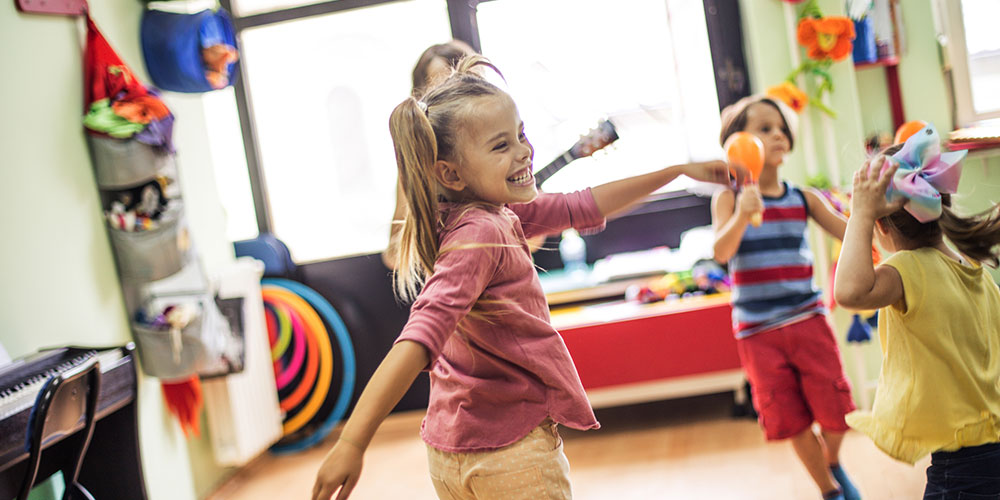The formative years are a crucial period of learning — both academically and socially. It’s the job of schools to foster both of these types of growth. School is likely the place where children will experience most of their socialization with peers. That’s why breaks in school are so important to children’s development. Breaks offer a chance for socialization, as well as an opportunity for students to give their brains a rest and return to their academic progress later with more energy.
What Happens During a Brain Break?
Typically, when we think of breaks in school, we think of recess. Recess often lasts for about 30 minutes in the middle of the day. There is also lunch period, which offers students a break from studies and a chance to eat and socialize with peers. A brain break, however, is somewhat different.
Brain breaks are short classroom breaks that allow students to rest their minds rather than becoming overwhelmed. These breaks are much shorter but offer a reprise and allow students to return to work refreshed and more productive. They also allow students a chance to boost their social skills by interacting with classmates.
Research has shown that during these breaks, students’ brains are not idle but are actually processing information and memories. Ten-minute brain breaks throughout the day are actually more effective than one 30-minute break, as they show marked improvement in cognitive function, reading comprehension, and productivity. After introducing students to new concepts, a brain break can help them to ruminate on that concept and make sense of it, holding on to that language for later.
Brain Breaks for Your Classroom
Brain breaks are also an opportunity to exercise the brain in different ways. You can play memorization games, take an opportunity to be silly, or allow students to socialize with each other in that time. Brain breaks should be regulated and structured — short periods of time that allow students to refresh themselves before diving back in. Here are some suggestions for brain breaks you can enjoy in your classroom:
- Have a 60-second dance party. Sitting in place for an hour can leave anyone stiff and a little listless, especially students. A 60-second dance party allows everyone to stretch their limbs as well as be silly and express themselves. Don’t be afraid to set the example when it comes to letting loose!
- Recite the alphabet in sign language. With 1 in 20 Americans who are deaf or hard of hearing, ASL is an important and often overlooked language. It can also be a fun language to learn! Ask students to stand up and stretch their legs, and then guide them through the ASL alphabet. If you practice this skill daily, it’s sure to stick in their minds for years to come.
- Do nothing for two minutes. And that means nothing. You can actually use the Do Nothing For Two Minutes website to listen to the sounds of peaceful waves. Encourage students to relax, close their eyes, and simply listen to those waves. This gives them a chance to really reflect on the information they’ve learned.
- Play popcorn. The game starts with everyone sitting at their desks. At any moment, a student can say “POP!” and jump up, and they remain standing for the rest of the game. But if two students say “POP!” at once, everyone sits back down and the game starts over.
- Make funny faces. Tell students to wiggle their eyebrows as quickly and dramatically as possible, followed by raising one eyebrow at a time. Ask them to make the funniest faces they can. This is sure to get some giggles out and gives students a refreshing break.
Brain Breaks: A Deeper Look at the Benefits
As stated by BrainFacts.org, “Brain breaks help children by replenishing attention, improving learning, and boosting creativity.” While some might fear that taking several breaks could lead to lazy, idle students, the results have shown the opposite. Students who take brain breaks in moderation have more energy to learn more.
These benefits really work as a cycle. Attention can be a huge struggle for young students. Because children have such limited attention spans, sitting through an hour-long class without zoning out can be a challenge. By taking short breaks at periodic intervals, younger students can refresh their attention well before taking in more classwork.
By “replenishing attention,” students are able to learn and retain more. Their academic progress will improve, and they’ll gain more from classes as a whole. In fact, a 2008 study even showed that taking time to potentially forget information can improve learning, as it helps students practice remembering, a useful skill as they continue through school and life.
And, of course, the more students learn and understand the world, the more inspired they become creatively. Brain breaks can boost creativity because by taking short breaks, tasks feel less daunting — including creative ones. This is true even for adults. Novelists, for instance, might struggle to write consistently for an hour, but thrive when they write for sets of fifteen minutes followed by five-minute breaks.
Brain breaks teach students that, in moderation, taking a break doesn’t mean “slacking off” or being lazy. Best of all, however, the science shows that these breaks will actually improve their development, both academically and socially.






